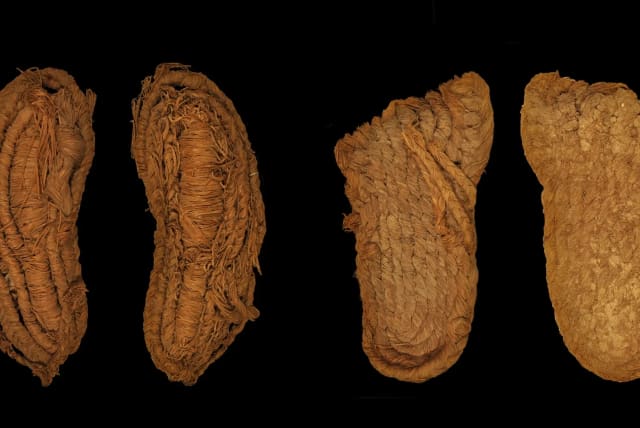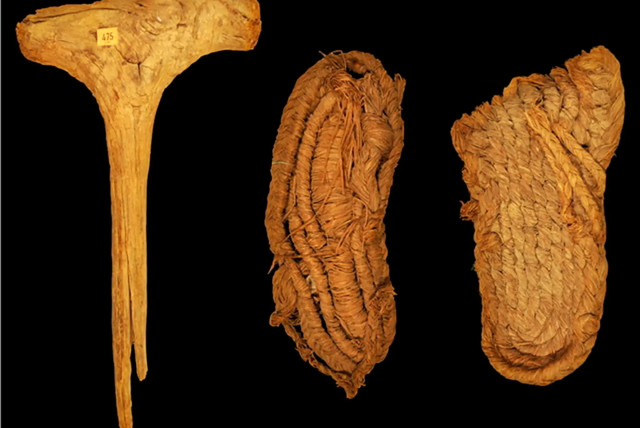Ancient sandals unearthed in Spain may be the oldest footwear ever found

The sandals discovered in a cave in Spain are "the earliest and widest-ranging assemblage of prehistoric footwear in Europe."
Sandals discovered in a bat cave in southern Spain may be the oldest footwear ever discovered in Europe, scientists said this week, estimating that they could be up to 6,200 years old.
Baskets, tools and the sandals found in the 19th century at a hunter-gatherer burial site in the Cueva de los Murciélagos, or “cave of the bats,” near the southern city of Granada, are much older than previously thought, a research team examining the items said in an article in the peer-reviewed Science Advances journal.
"The quality and technological complexity of the basketry makes us question the simplistic assumptions we have about human communities prior to the arrival of agriculture in southern Europe," said Francisco Martínez Sevilla, a researcher in the Prehistory Department of the University of Alcalá.
"It means that the use of esparto grass started at least 9,500 years ago, and it is a tradition which is still alive in Iberia [Spain and Portugal]," Otal told CBS. "It is spectacular how the techniques, the raw material and its preparation have been used for thousands of years and there are still people working in the same way."
The study used radiocarbon dating to date 76 items, including baskets and 22 sandals made from esparto, a kind of grass used in crafts across the Iberian Peninsula and North Africa for thousands of years.
How were these ancient shoes made?
The sandals discovered in the cave are "the earliest and widest-ranging assemblage of prehistoric footwear, both in the Iberian Peninsula and in Europe, unparalleled at other latitudes," according to the study.
The researchers stated that two types of footwear were discovered at the site. One had a consistent woven sole, and the other had a harder "central core." While no laces were found with the first type, "for the central core type, a small group of fibers emanating from the base of the sole may have been placed between the first and second toes. These fibers are also connected to a braid fixed to the middle of the sandal, which could be tied around the ankle."
The ancient humans crushed the grass to make twine to braid baskets, bags, and sandals. The grass had to be dried for 20 to 30 days before it was rehydrated for 24 hours to make it pliable, a complex process that took considerable skill.
Similar sandals found in Armenia are estimated to be 5,500 years old, while another pair of ancient shoes worn by “Ötzi the Iceman”, a prehistoric man found in Italy in 1991, are dated to 5,300 years ago.
Jerusalem Post Store
`; document.getElementById("linkPremium").innerHTML = cont; var divWithLink = document.getElementById("premium-link"); if (divWithLink !== null && divWithLink !== 'undefined') { divWithLink.style.border = "solid 1px #cb0f3e"; divWithLink.style.textAlign = "center"; divWithLink.style.marginBottom = "15px"; divWithLink.style.marginTop = "15px"; divWithLink.style.width = "100%"; divWithLink.style.backgroundColor = "#122952"; divWithLink.style.color = "#ffffff"; divWithLink.style.lineHeight = "1.5"; } } (function (v, i) { });

